Hong Kong police faced a barrage of questions regarding their use of crowd control weapons on Sunday night, as well as their tactics involving undercover officers and the alleged planting of evidence.
Deputy Commissioner of Police Tang Ping-keung admitted that police officers disguised themselves as “different characters” during the Causeway Bay operation on Sunday, but refused to say how many were involved and when the undercover operation first began.
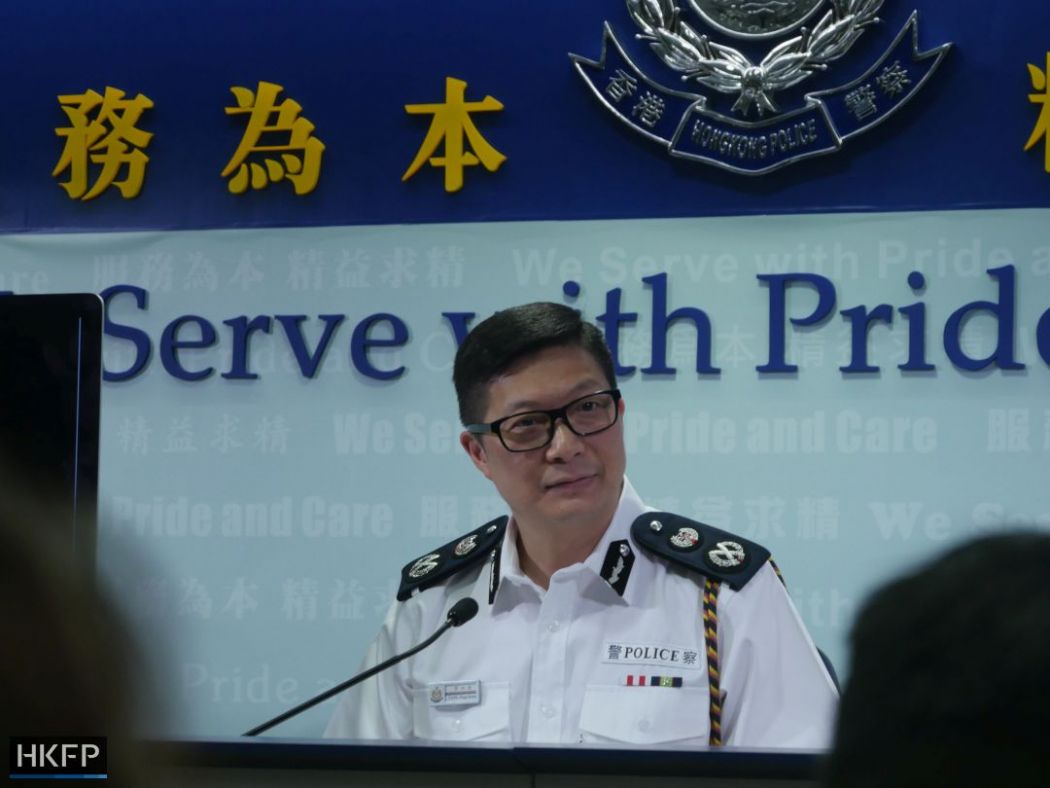
Tang said he had also ordered a stop to the use of tear gas that was past its “best by” date, and confirmed that such ammunition had been previously used against protesters. Assistant Commissioner of Police Mak Chin-ho added that the so-called “expired” tear gas posed no additional health risk compared to the normal variety. Tang added that it was usually the gunpowder – not the chemicals – that would degrade over time.
Asked about the woman in Tsim Sha Tsui who had her eye ruptured by a projectile, Mak said there was no proof that she was shot by police.
Meanwhile, Tang and four of his top lieutenants also dismissed allegations of impropriety, including an incident captured on camera where police appeared to plant point sticks into the backpack of an arrestee.
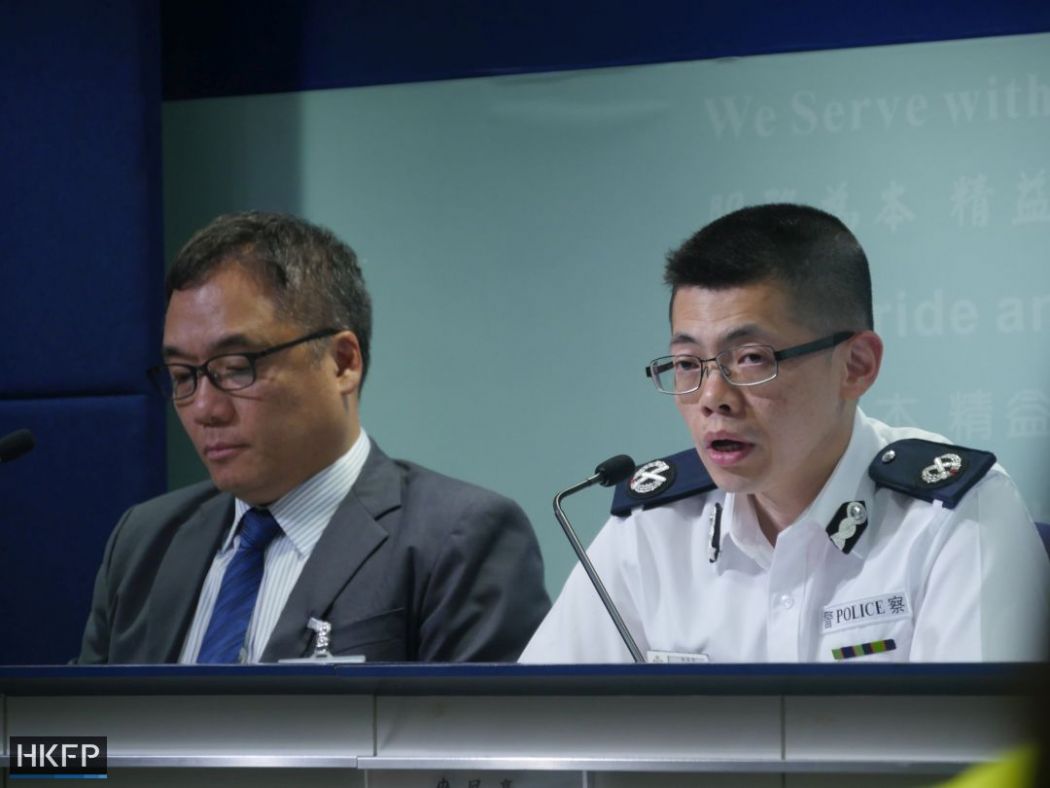
The press briefing on Monday ran for over three hours, with police top brass being regularly interrupted by sceptical reporters. In one of his few public appearances since the protests began in June, Tang promised to answer all questions from the press.
Undercover operation in Causeway Bay
Police reported 149 arrests over the past few days, with suspects aged between 15 and 53. It brings the total number of protesters arrested since June to around 700.
Tang said that 15 of those were “core violent rioters,” who were deliberately targeted in an “intelligence-led” operation in Causeway Bay. An undisclosed number of officers went undercover in disguise and conducted arrests, he added.
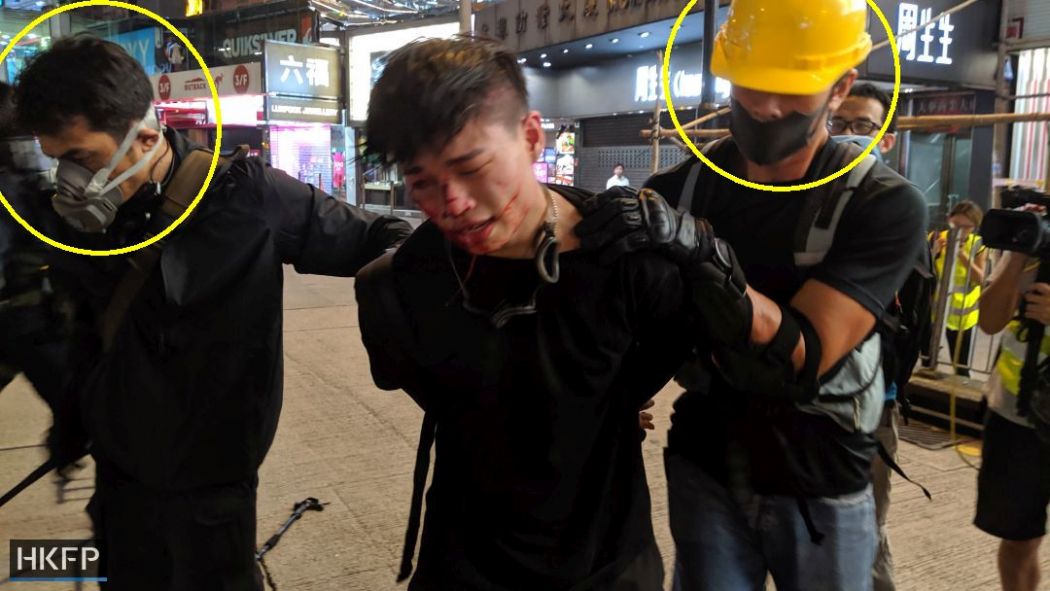
HKFP footage showed a man dressed in black and wearing a yellow hardhat – an outfit typical of anti-extradition bill protesters – working with riot police to subdue a protester. The suspected undercover officers refused to identify themselves when confronted by reporters.
“All of the arrests were made by police officers. We used decoy operatives… against those violent rioters who use deadly force, such as petrol bombs,” Tang said, comparing the situation to drug busts.

Asked how the public could verify that the violent acts were not committed by undercover cops, Tang said that the force’s internal guidelines prohibit “decoy operatives” from breaking the law.
Tang also said that the undercover officers were only required to identify themselves “in appropriate situations,” but the force would review the situation on Sunday night and see if there was room for improvement.
It remains unclear how many officers have disguised themselves as protesters and when the tactic was first adopted, as Tang said such details could not be publicised due to ongoing police operations.

As for news footage from Now TV that appeared to show officers framing a protester, police said that they had no evidence to support the claim. Li Kwai-wah, Senior Superintendent of Organised Crime and Triad Bureau (OCTB), said that the force will investigate the case and told reporters not to jump to conclusions.
Use of weapons in MTR stations
On Sunday night, police fired one canister of tear gas in the Kwai Fong MTR station, and pepperballs were shot at close range in Tai Koo MTR station.
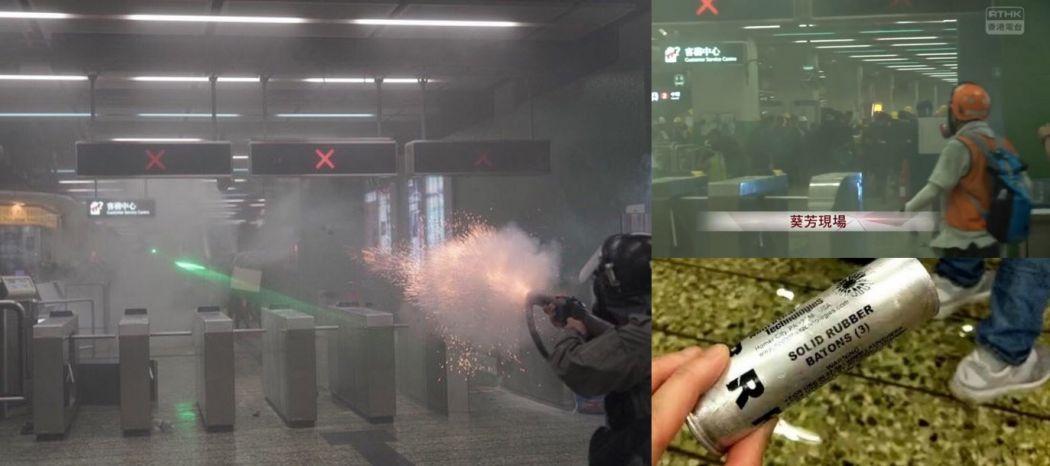
Top police officers on Monday defended the actions, saying that the Kwai Fong train station was an above-ground “semi-open space.” Li said that tear gas could be fired in indoor areas in emergency situations – despite its manufacturer saying otherwise in its instructions.
Police fired tear gas in Kwai Fong station because protesters inside the paid area were generating smoke and launching projectiles, Li added.
As for the use of pepperball launchers in Tai Koo station, Mak said that the weapon was meant for short-range use and was not a “firearm.” However, he was unable to tell reporters what the minimum safety distance was for firing the launcher.

None of the five officers at the press conference could provide specifics from the force’s weapon guidelines.
“I have to admit I don’t know how to use a pepperball launcher, I didn’t receive the training,” said Tang, the most senior among them. “I command a lot of things, do I have to know how wide the tires are on police vans?”
In a statement on Monday night, the MTR Corporation raised concerns about the police operation: “The MTR management had a meeting with the Police today and has conveyed to the police our concern over the incident, and urged them to take the safety of MTR staff and passengers into account during their law-enforcement actions.”
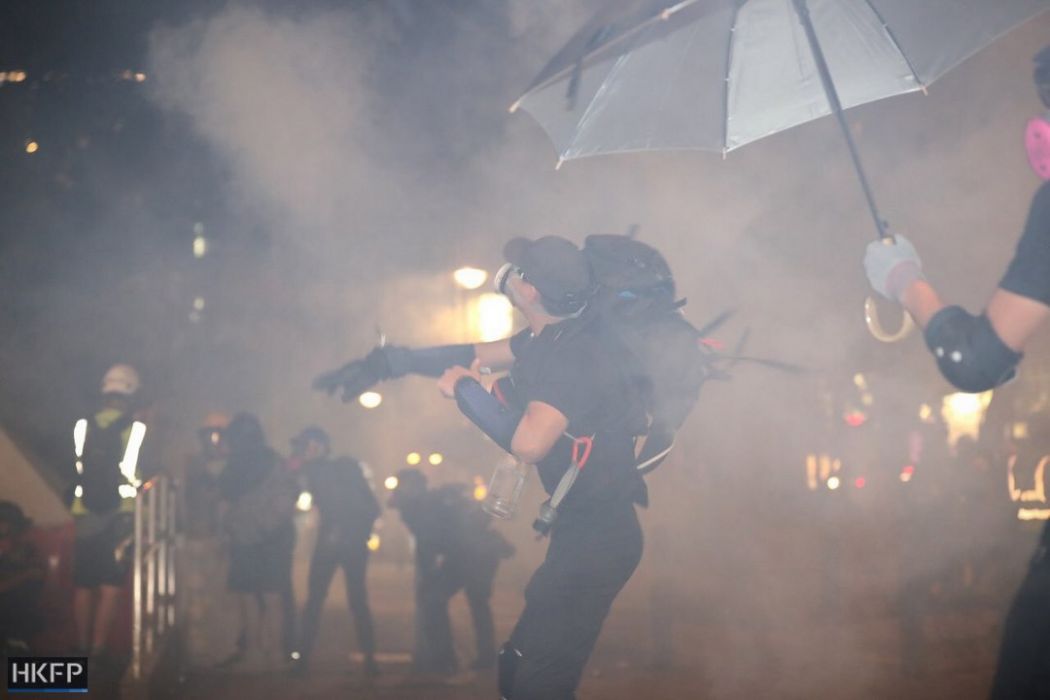
Eye injury and complaints
At around 7:30pm on Sunday, a protester outside Tsim Sha Tsui police station appeared to be shot by a bean bag round, rupturing her right eye.
Police on Monday said there was no evidence to show how the woman was injured, and that they could not yet verify photos circulating online that showed a bean bag round lodged in a set of broken goggles.

“There is a picture of what appeared to be a bean bag round next to the goggles, but we need some time to check if it is real and accurate,” Mak said. “There were a lot of similar weapons on the scene: was it a bean bag round or a metal ball [fired by protesters]? We don’t know.”
Mak said that police fired beanbag bullets in Tsim Sha Tsui on Sunday, but said it was unclear if it matched up with the timing and location of the woman’s injury.
At the end of the press conference, police promised to regularly release numbers on ammunition used.
Earlier in the day, police had unveiled their water cannon truck to lawmakers – formally known as “specialised crowd management vehicles.”

Police said that the truck had completed all road tests and preparations, but its use would require “careful consideration.” Besides water, the truck could also spray dye liquid or pepper spray solution.
A field test saw police spraying water at dummies around 20 to 40 metres away, moving them a few metres back. Police had previously said that the water cannon would only be aimed at the lower limbs of targets.
At the press conference, officers also revealed that the force had received 373 complaints, though declined to say if any officers had been suspended.

Asked if the officers facing allegations of impropriety should be temporarily removed from their post, Tang replied: “How can we suspend someone based on just an allegation? If that’s the case then half of the police force will be suspended.”
